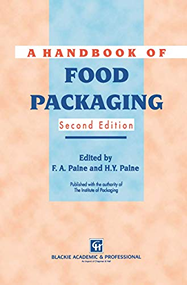A Handbook of Food Packaging
Material type: TextLanguage: English Publication details: London : Blackie Academic and Professional, ©1992Edition: 2ndDescription: XIV, 497 p. : illISBN:
TextLanguage: English Publication details: London : Blackie Academic and Professional, ©1992Edition: 2ndDescription: XIV, 497 p. : illISBN: - 0216932106
- 664.0902 HAN
| Item type | Current library | Shelving location | Call number | Copy number | Status | Date due | Barcode |
|---|---|---|---|---|---|---|---|
 Reference Collection
Reference Collection
|
Seminar Library | Department of Food Engineering | 664.0902 HAN | 2022-23 | Available | 98068 |
SUMMARY:
This is the second edition of a successful title first published in 1983 and now therefore a decade out of date. The authors consider the development of the right package for a particular food in a particular market, from the point of view of the food technologist, the packaging engineer and those concerned with marketing. While the original format has been retained, the contents have been thoroughly revised to take account of the considerable advances made in recent years in the techniques of food processing, packaging and distribution. While efficient packaging is even more a necessity for every kind of food, whether fresh or processed, and is an essential link between the food producer and the consumer, the emphasis on its several functions has changed. Its basic function is to identify the product and ensure that it travels safely through the distribution system to the consumer. Packaging designed and constructed solely for this purpose adds little or nothing to the value of the product, merely preserving farm or processor freshness or preventing physical damage, and cost effectiveness is the sole criterion for success. If, however, the packaging facilitates the use of the product, is reusable or has an after-use, some extra value can be added to justify the extra cost and promote sales. Many examples of packaging providing such extra value can be cited over the last decade.
